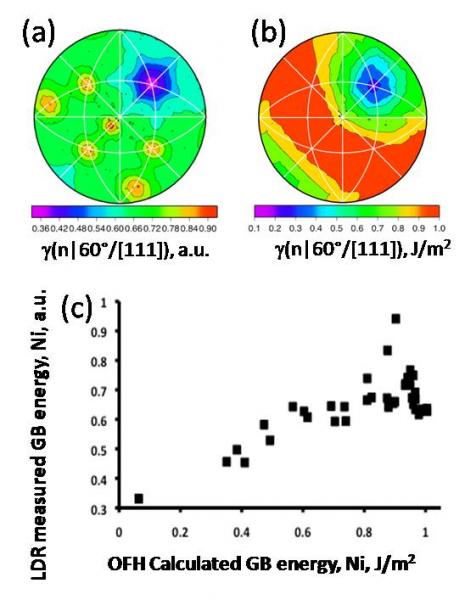A collaboration between the CMU MRSEC and Sandia National Laboratory has permitted the first large scale comparison between experimentally measured grain boundary energies and energies calculated based on atomistic simulations. The techniques for the measurement (at CMU) and the calculations (Sandia) are unique to each institution and largest experimental and theoretical data sets currently available. The favorable comparison validates the methods. These grain boundary properties will be used as the basis for large-scale simulations of microstructure evolution that can be used to predict how to make materials with controlled structures and properties. This comparison provides confidence that these predictions will be accurate.

Figure. (a) Experimentally determined grain boundary energy (for grain boundaries in Ni with a 60 ° misorientation about [111]) as a function of the orientation of the grain boundary plane, plotted in stereographic projection. (b) Energies calculated by the Sandia group. (c) Point by point comparison of the calculated and measured energies. With the exception of the two local maxima in the observed energy, the agreement is strong.